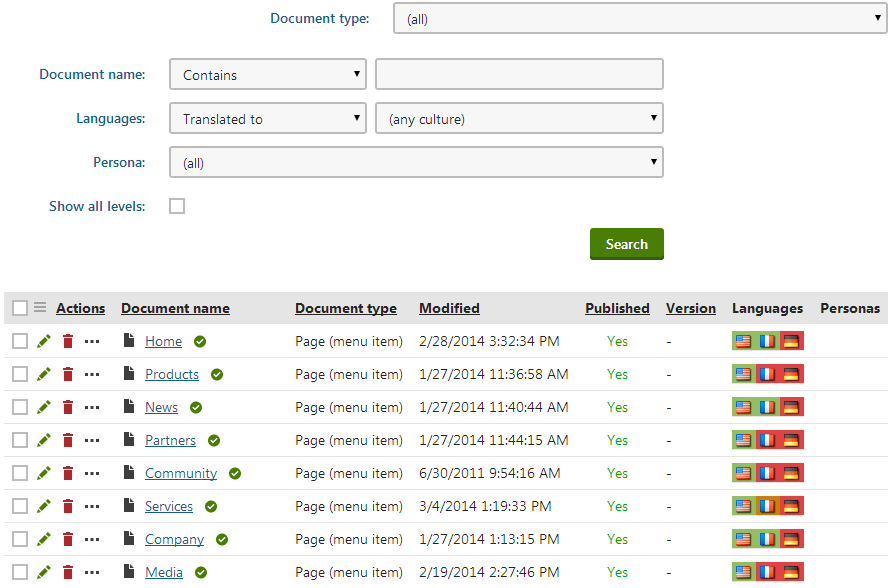Language status overview
The Listing mode of the Pages application provides an overview of document language versions.
If you select a document in the content tree and switch to Listing mode, you can see all child documents.
The Languages column displays flags with differently colored backgrounds for all languages available on the website. The flags represent particular language versions of documents and indicate the following statuses:
- Green - Translated - the document is available in the given language and up-to-date. The actual language of the document’s content has no effect on the status, the system only checks whether the language version exists.
- Orange - Outdated - the language version exists for the document, but is outdated. The system considers language versions to be outdated if the default language version of the document has been modified (or published when using workflow) more recently.
- Red - Not available - the document does not exist in the given language. You can also see the
 icon next to documents in the content tree.
icon next to documents in the content tree.
The Waiting for translation status indicates that the document exists in the given language, but its content has not been translated yet. The document’s content is currently submitted to a translation service.
You can manage the translation submission in the Translations application.
Clicking a Translated or Outdated flag opens the Page tab of the appropriate language version of the document. If you click a Not availableflag, the language version’s creation dialog opens.
The Document name column displays the names of the documents in the currently edited culture. If the document version does not exist in this language, the column displays the name from the default culture.

The Languages tab
You may also view the language statuses separately for individual documents. To do so, select a document in the content tree in the Pages application and switch to the Properties -> Languages tab. Here you can also use the following actions for individual language versions:
- Edit culture version - switches the Pages application to the given language.
- Create new culture version - shown for languages in which the document is not available. Clicking the action creates a new version of the document in the given language.
- Translate document - opens a dialog where you can submit the document for translation to the given language, using a specified Translation service.

Hiding the Languages tab
The Languages tab can be displayed or hidden for members of particular roles. This can be set up using UI personalization.